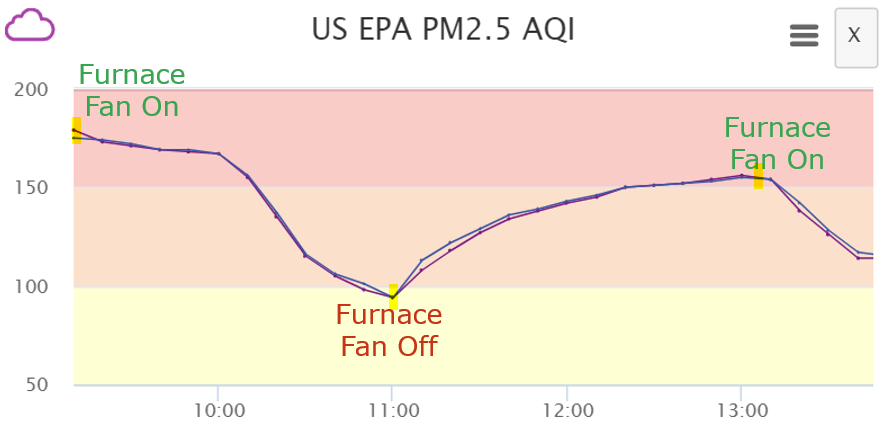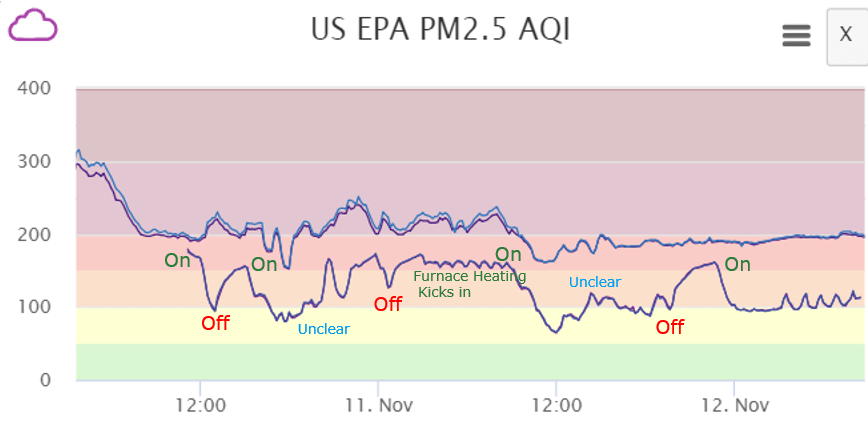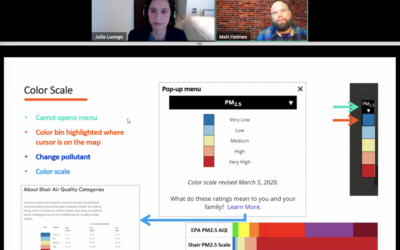One major reason: so that you can know when to take action. Simple steps like turning on the furnace fan (with a highly MERV-rated furnace filter from the hardware store) can improve indoor air quality during outdoor pollution events. Over the weekend, a member of the SHAIR team did just that to protect their family from the wildfire smoke engulfing the SFBayArea. Their indoor PurpleAir sensor captured the shifts as they turned the furnace fan on and off throughout the day.
After the weekend, our team member gathered measurements from a nearby outdoor PurpleAir (the top/higher data series) and plotted them alongside their indoor PurpleAir monitor. The furnace and its fan were turned off and on at various points, but not all transitions were logged or remembered, and some may be affected by recall bias :). Note: some indoor peaks include dinner time cooking, too. The time frame of the original image is the very beginning (leftmost side) of the indoor data series. While a clear relationship exists between the outdoor and indoor concentrations (a good sign for the reliability of the PurpleAir low-cost sensor!), a strong correlation between indoor concentrations and furnace timing is maintained.
Learn more about MERV-rated furnace filters and indoor air purifiers on the EPA’s website.
<note: an ever-so-slightly version of this post originally appeared on SHAIR’s LinkedIn page during the CampFire Bay Area smoke event on approximately the date noted on this blog post>







